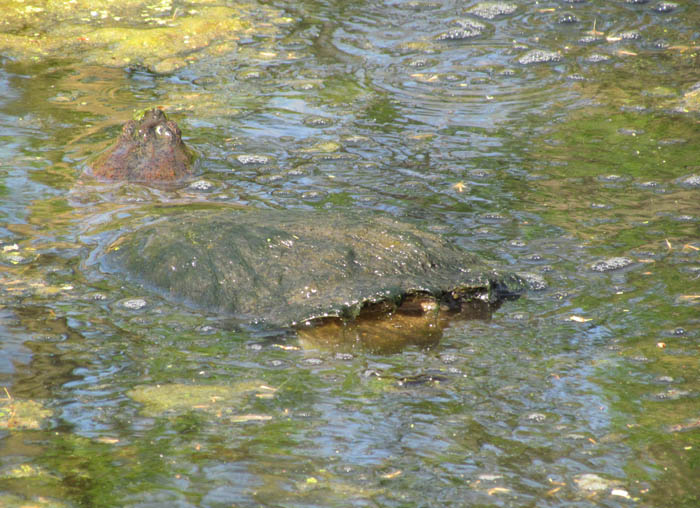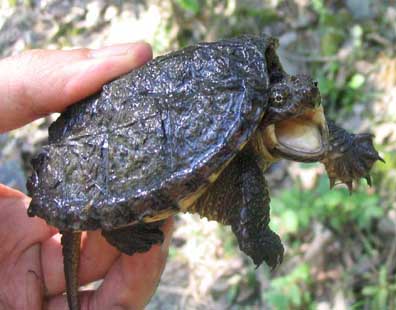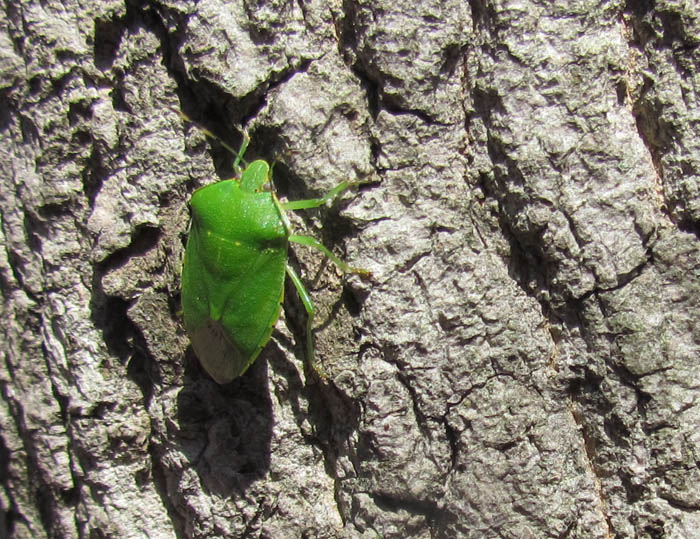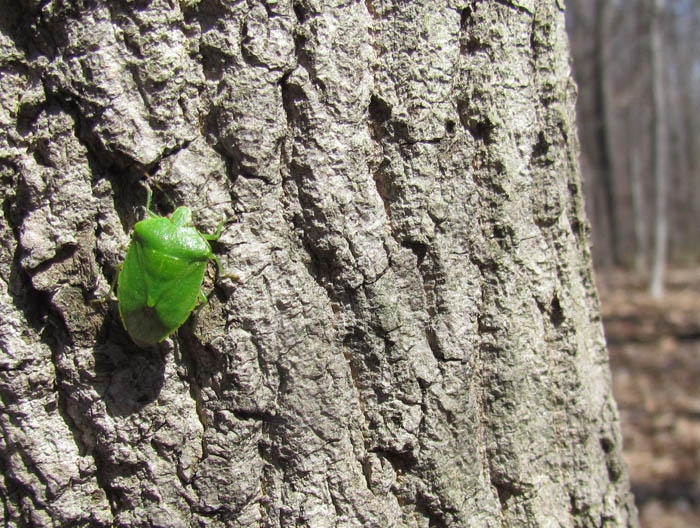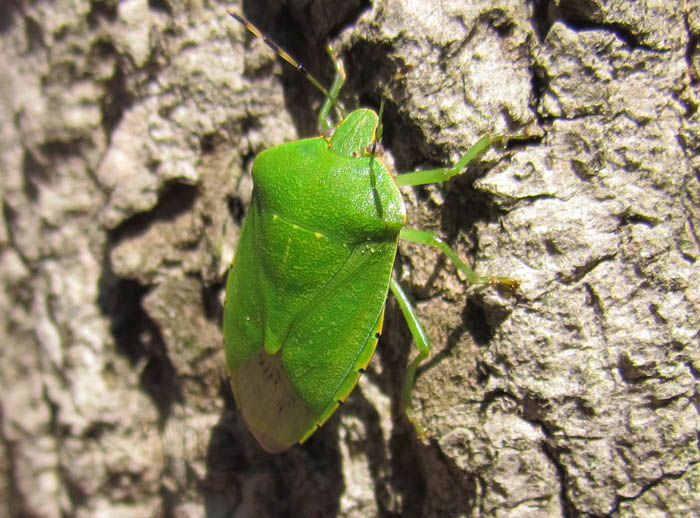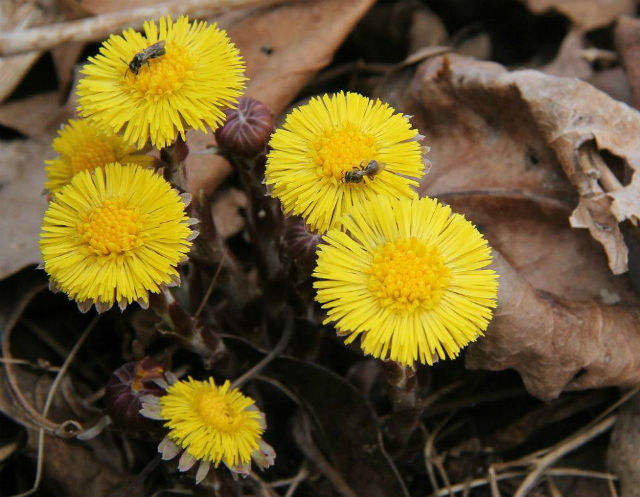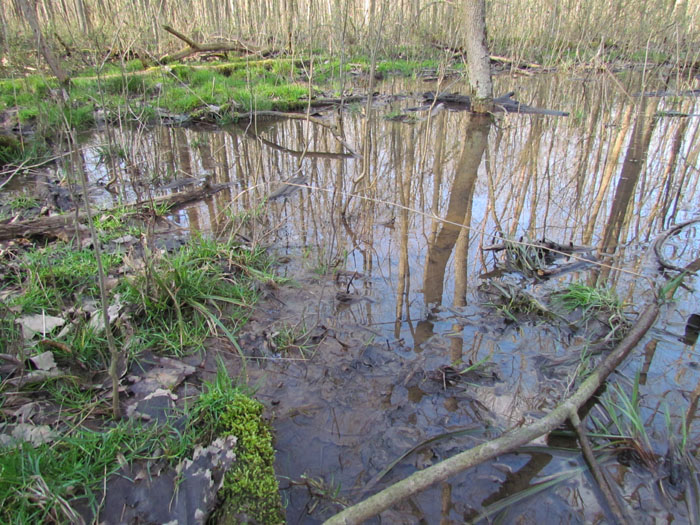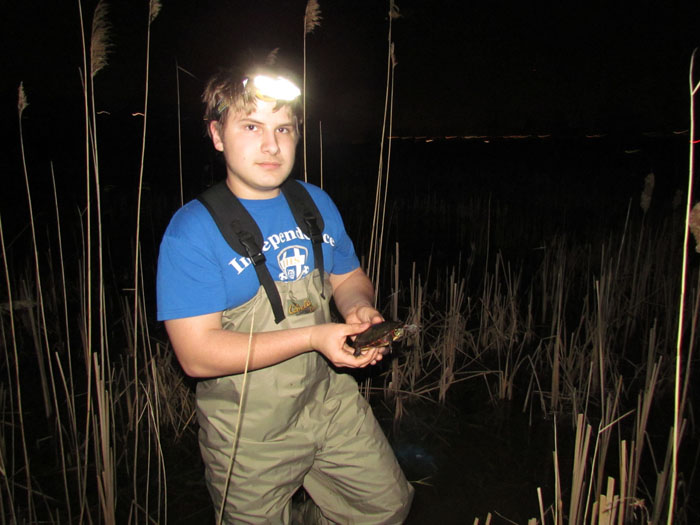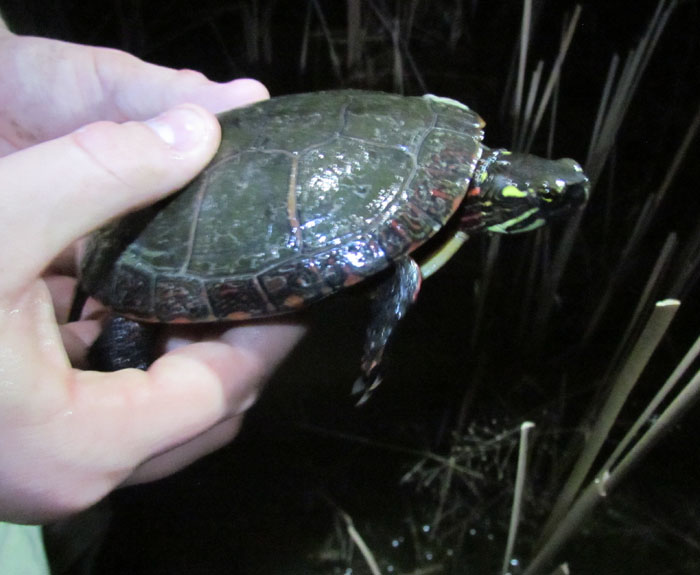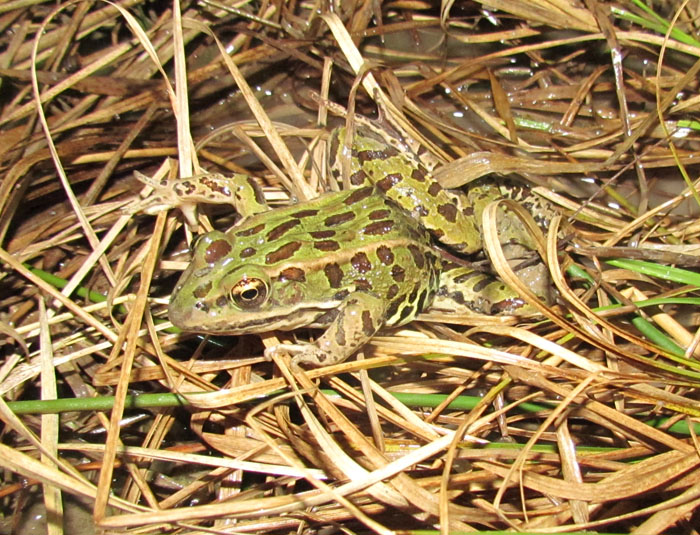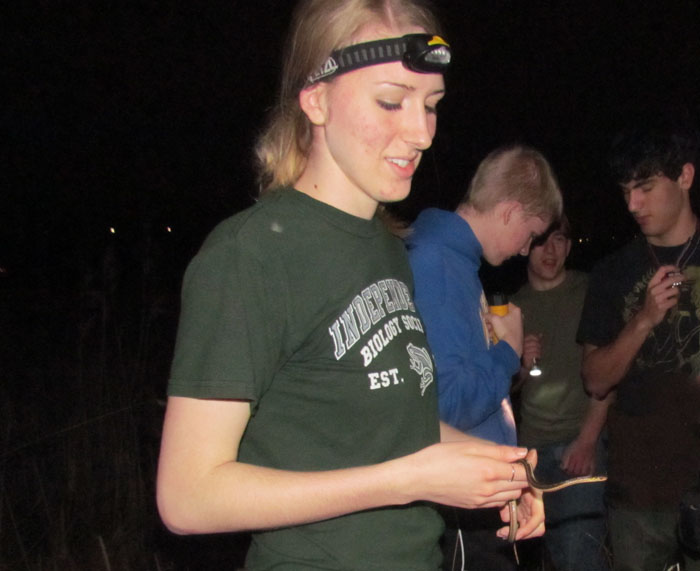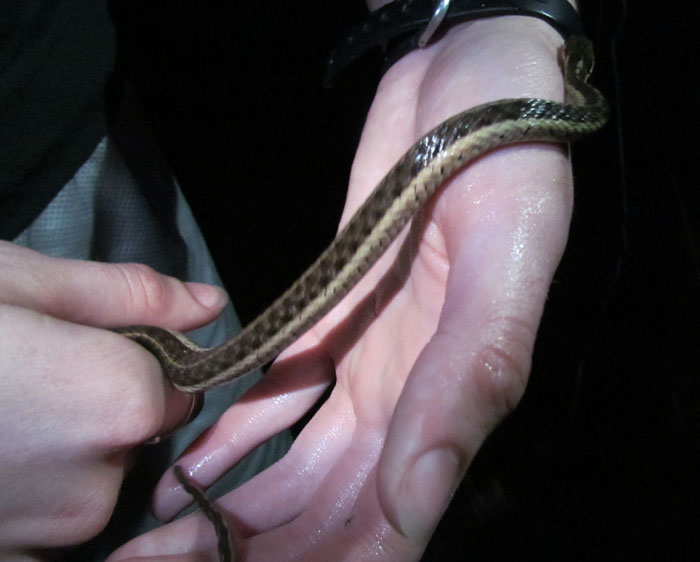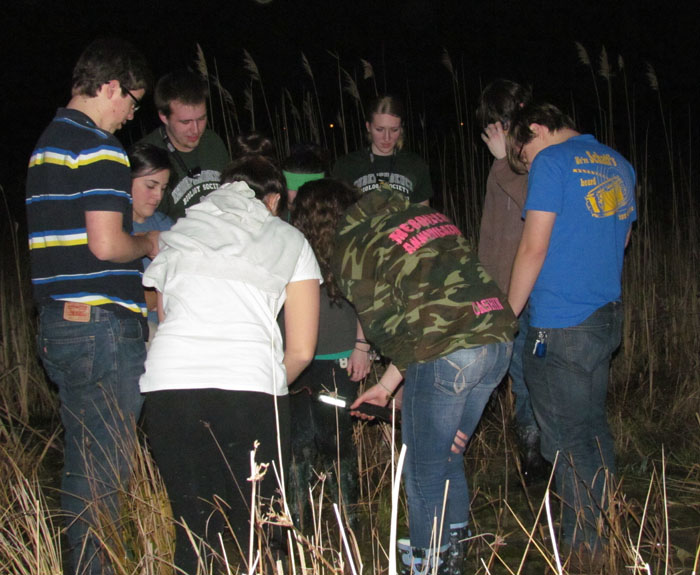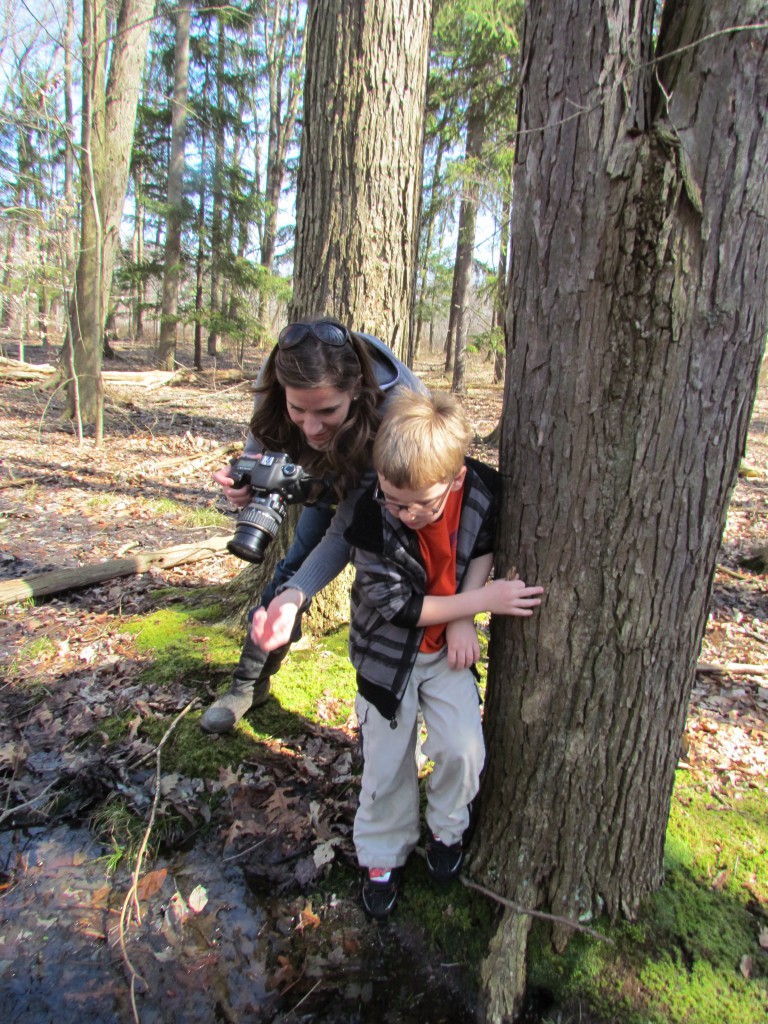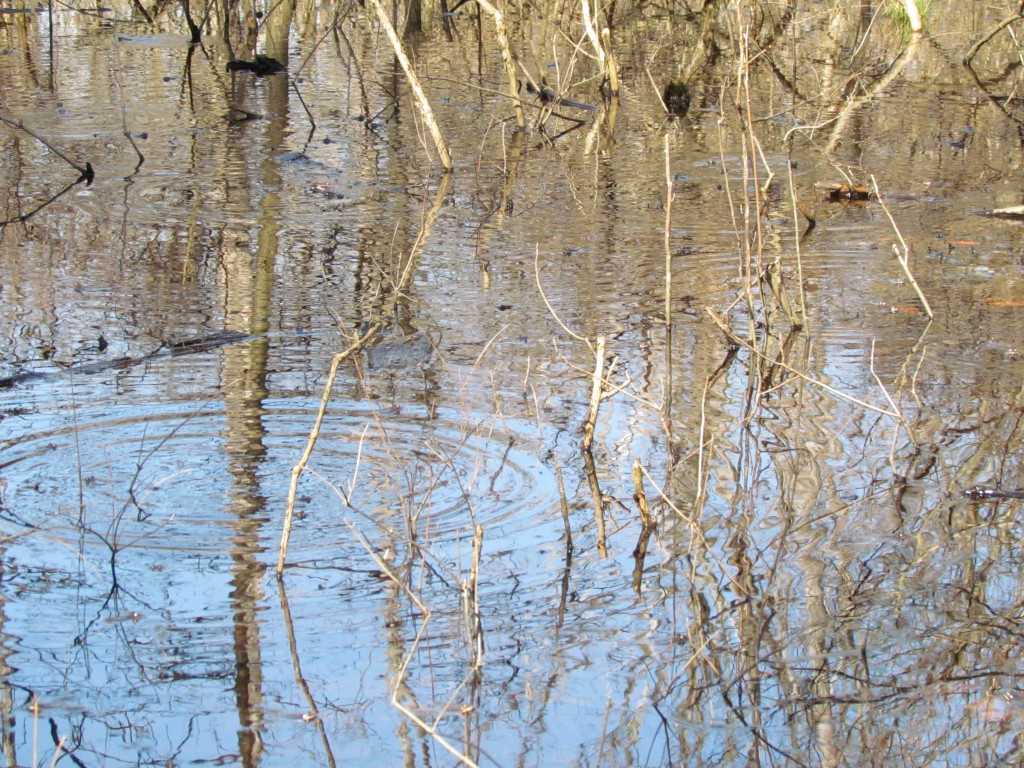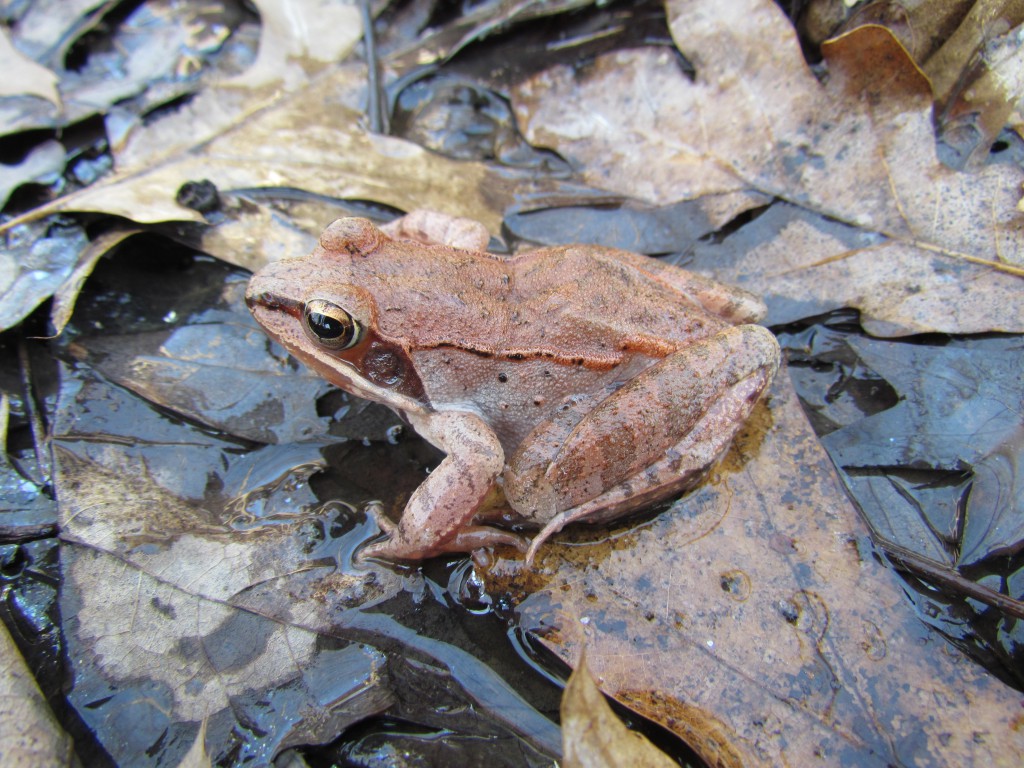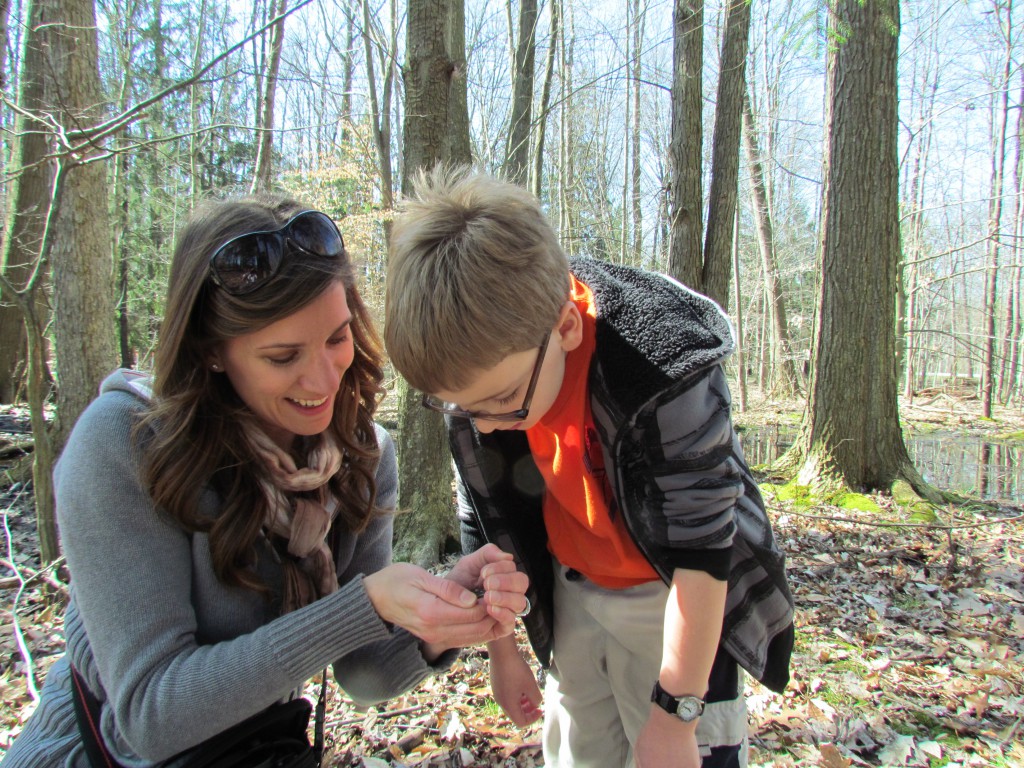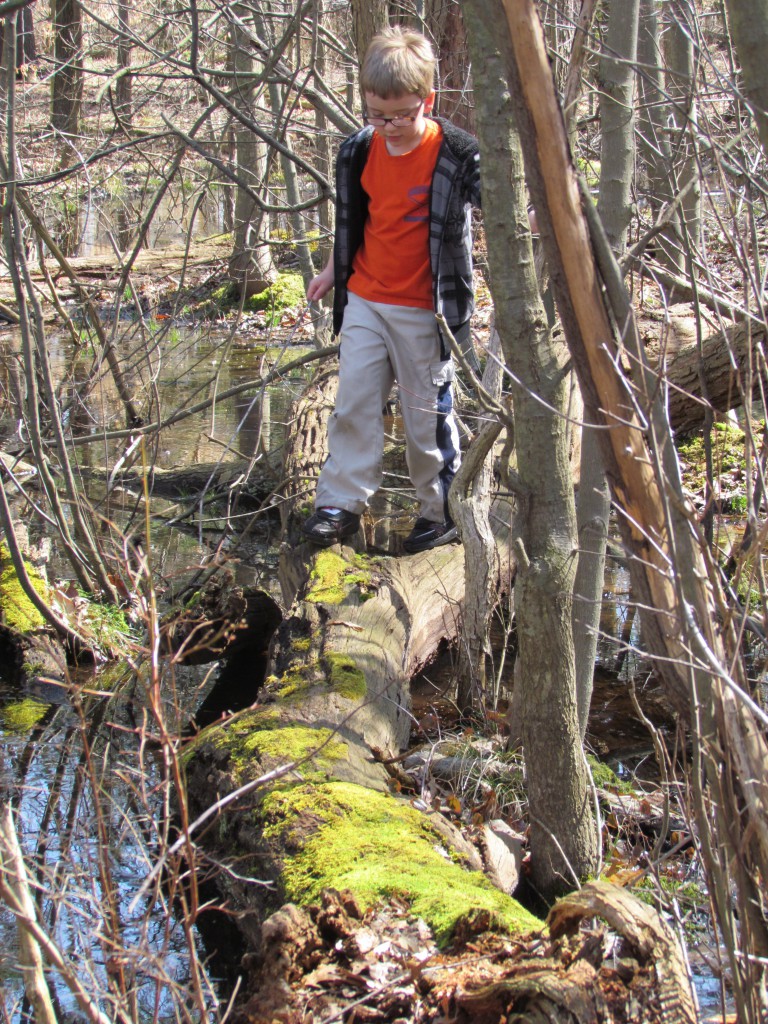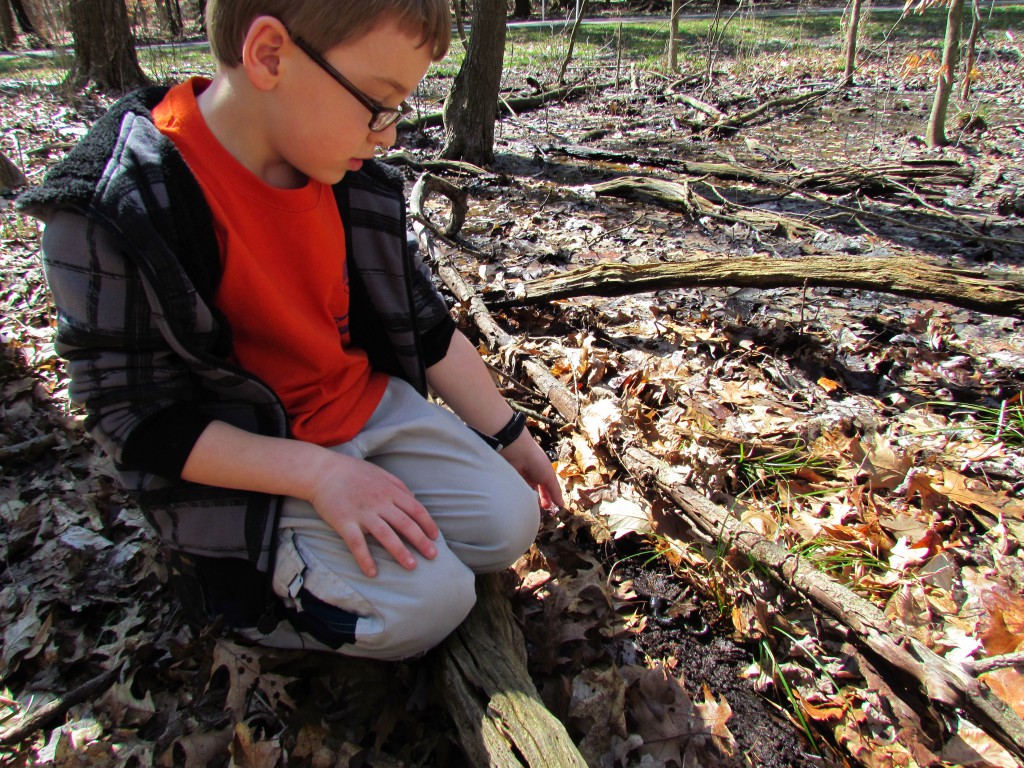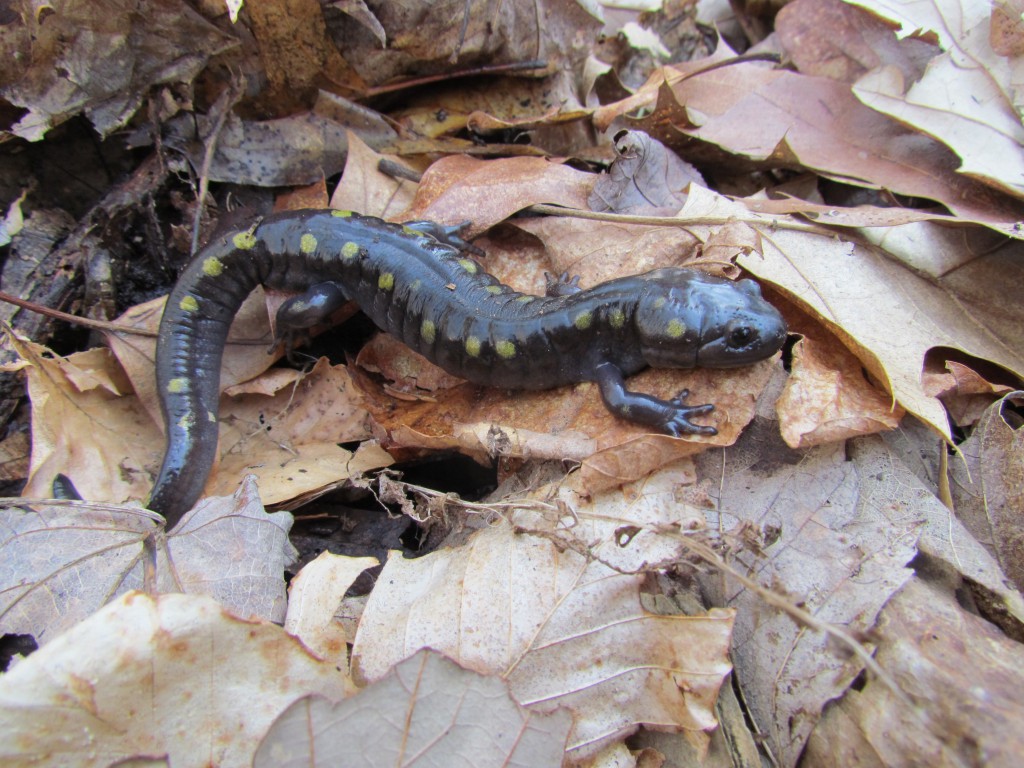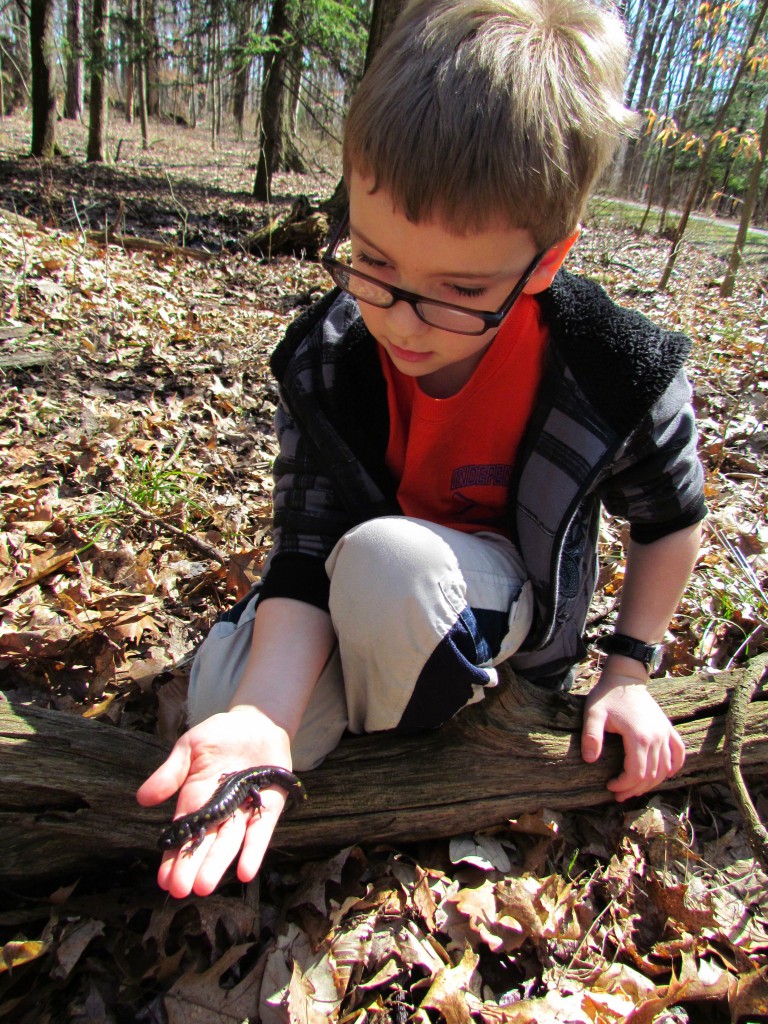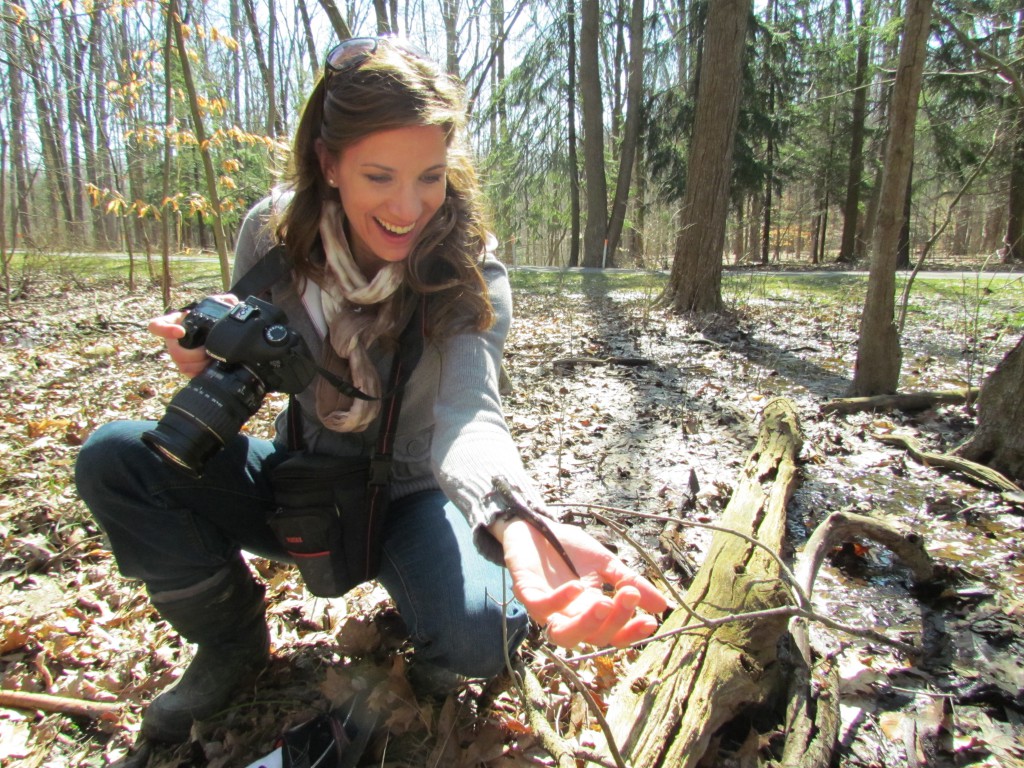I like Snapping Turtles. They’re big and have a prehistoric appearance. With a long, alligator-like tail, elephantine legs, fierce disposition, and powerful jaws – they’re a reminder of when reptiles ruled the earth “back in the day.” Today was a particularly good day for seeing these turtles. Most of their time is spent at the bottom of shallow waterways. They are generally not aggressive when in the water. In the springtime they occasionally bask. This one was particularly large.
A little further down the path, these two males were having a territorial dispute. Here’s one of them on the lookout for the submerged male nearby.
The two individuals would face each other and then slowly and then deliberately lunge forward, like sumo wrestlers. They would scratch, kick and bite each other. Occasionally one would roll the other over in the water. It’s not often that one can see wild behavior like this occurring.
Snapping Turtles have large heads which cannot be withdrawn into their small shells. This turtle, which I saw a week ago, displays the long tail and jagged top shell.
They have a very small bottom shell, which exposes their legs. It is for this reason that they are thought to be so defensive when out of the water. Here’s a cute little one that I found while herping five years ago.
These turtles are the largest in Ohio (and much of the northeast), sometimes weighing 35 pounds. The biggest one I’ve ever caught and measured had a 14 inch shell. Though I’ve seen some that I’m pretty sure were bigger. A few years ago my friend Dale and I went fishing and he caught a Snapping Turtle. For some reason he did not want to hold it, but he let me hold it and took this picture with his cell phone.


